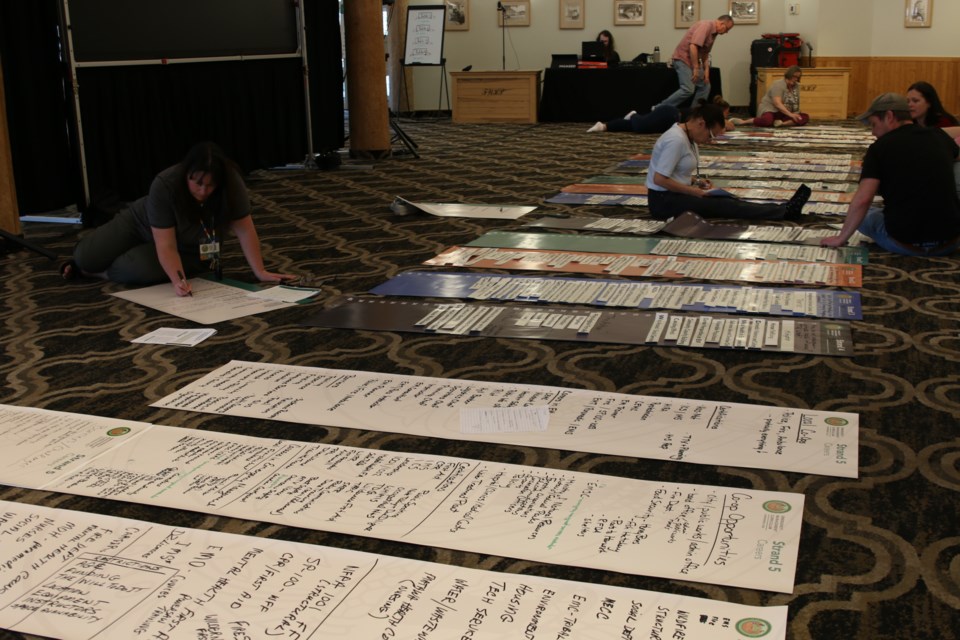THUNDER BAY — How to respond to a major emergencies could soon be something students across the province have the option to learn about in class.
Seven Generations Education Institute is developing an emergency management curriculum for Grade 11 and 12 students, grounded in the experiences of First Nations youth in Northern Ontario.
The institute hopes to implement the curriculum in a pilot study starting in two schools in February 2026 before making the necessary improvements to roll it out at a larger scale the following fall.
Provincial emergency management coordinators working at tribal council levels, a youth panel and educators met at the Fort William Historical Park in Thunder Bay to brainstorm its development on Tuesday and Wednesday.
Preeti Mann, the project manager with the institute, said the curriculum has a First Nation and Indigenous focus to it, making it "unique."
“These kids can see themselves in the curriculum that is taught to them," said Mann.
"They read something in the curriculum or they do an activity and they can apply it directly to their real-life experiences from where they come from," she added.
Currently, Mann said nothing similar exists in all of Canada, so it is really filling a huge gap for young people who are interested in pursuing a career in emergency management.
“It's really creating that pathway for them to get engaged early, learn about what more education opportunities are available to them in emergency management and where the employment opportunities are and,” said Mann.
“… have them working in their communities making a difference being young leaders.”
Mann explained that there's never been a greater need for having young people trained and knowledgeable about how to prevent and respond to emergencies than there is now.
“Fires in Northwestern Ontario, flooding (and) the opioid crisis. Emergency management covers a lot of different things and these are all important things that are having an impact on all of us,” said Mann.
Discussion has been a huge part of the development process, she added, what young people want to see in a curriculum.
“There's a lot of brainstorming, a lot of discussion, a lot of presentation and I think most importantly a lot of listening,” said Mann.
Logan Dunnshabequay was one of three trained youth structural firefighters sharing his experiences and opinions on emergency management, preparedness and planning for youth to engage more students in their communities' emergency services.
“My experience with this youth program has been great," said Dunnshabequay.
"I am originally from Wabigoon Lake Ojibway Nation along with the three gentlemen that I'm with. And yeah, we hope to do more events like this and to possibly build up this program for high schoolers."
Dunnshabequay said people need to look forward to being in the emergency services.
“Right now, they're having a complete staffing shortage, so paramedics are... really needed, and so if we could get youth into paramedics or firefighters, or even police,” said Dunnshabequay.
However, he said he noticed that a lot of people making decisions for youth and engagement for emergency services are older and believe they are unqualified when they can do as much as the adults.
“All the elders are gone or all the teachers that taught us what to do are gone. we got to step up and someone has to do it,” said Travis Williams, another youth firefighter.
Wilbert Wesley, the Mushkegowuk Council's Emergency Management Services' director and delegate, has worked in the field for nearly 30 years. He said he is excited to see progress made in "leaps and bounds" as they've overcome challenges over the years.
“It's not just for First Nations, it's for non-First Nations," he said. "And it's a great way to share our unique culture and perspective and hopefully developing friendships and career paths in the future.”
How an emergency is managed concerning First Nations is different than for a municipality that is governed by the province, said Wesley.
“We need to understand those dynamics that are involved, in order to make it flow more efficiently for the safety of those that we are protecting, be it the civilians, the First Nations themselves and the uniqueness, in which, they are governed by,” said Wesley.
He said they also need to understand and teach that to the course's students, how they could utilize what is currently in place with the governments to train and educate their community members back home efficiently and lead them into other career choices moving forward.
“Youth is input was very important. Having them here present to provide that input will give us the dynamics and the tier system we need to efficiently bring across the curriculum to the youth that will be taking this course in the future,” said Wesley.
He added that including the challenges that currently exist for First Nations and the options they have compared to before COVID and 10 to 15 years ago is also important.
